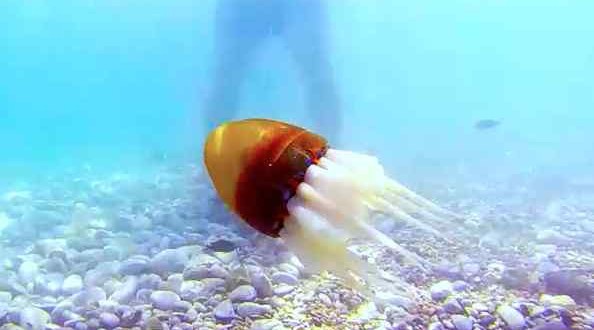Greek researchers from the Foundation for Research and Technology Hellas (FORTH), have taken a swimming robot to the ocean waves for the first time. The robot, developed as part of the European Commission funded OCTOPUS program, can swim using an octopus-style sculling motion, and can also move across the ocean floor, albeit slowly.
According to the researchers, they recently added a new feature to their robot – silicone webbing between its tentacles. Evidently, real-world Octopi already possess this webbing, and use it to improve both speed and efficiency while in the water – by quite a bit, apparently, The researchers have reported that the webbed model is almost twice as fast in the water as the unwebbed one.
Without the web, the robot can only maintain speeds of up to 100 mm/second. With the web, however, it’s able to reach speeds of 180 mm/second, with far greater efficiency besides. You’ll probably all agree with me when I say that this is a pretty cool invention…but what exactly could one use it for? What purpose would a robot like this serve?
Well…the short answer is ‘science’ and probably not much else.
According to the researchers, the octopus bot is an ideal platform for the observation of marine life. Fish apparently can’t tell the difference between the machine and a flesh-and-blood creature (though that could be problematic if the little robot happens to run into any natural predators). I expect that – with a bit of modification – it could also be used to measure and examine water quality and conditions.
Agencies/Canadajournal
 Canada Journal – News of the World Articles and videos to bring you the biggest Canadian news stories from across the country every day
Canada Journal – News of the World Articles and videos to bring you the biggest Canadian news stories from across the country every day



